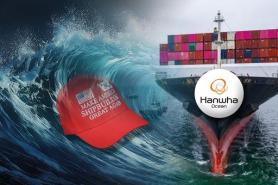![Yoo Ji-hoon, Research Fellow at Korea Institute for Defense Analyses [Photo: KIDA]](https://image.ajunews.com/content/image/2025/10/27/20251027082959683277.jpg)
SEOUL, October 28 (AJP) - South Korea's alliance with the U.S., has long been a cornerstone of security on the Korean Peninsula, combining Washington's extended deterrence with Seoul's defense capabilities to counter North Korea's nuclear threats.
But a confluence of new and complex issues is challenging the resilience of the alliance amid a rapidly shifting landscape in Asia and the broader Indo-Pacific region, driven by intensifying rivalry and trade disputes between U.S. and China, Russia's prolonged war in Ukraine, and North Korea's growing nuclear and missile arsenal.
In the meantime, the U.S. Navy, which boasts the world's most formidable maritime force, is facing structural difficulties as its shipyards struggle to maintain and repair its vessels, exposing vulnerabilities in both quantity and quality.
The U.S. aims to maintain at least 350 ships but currently has about 290, while China, which is flexing its muscle in the Indo-Pacific, appears to have already surpassed the U.S. in fleet numbers. It is no wonder that the U.S. welcomed Seoul's proposal, dubbed "MASGA" (Make America Shipbuilding Great Again) last July, as part of a broader deal to reduce reciprocal tariffs from 25 percent to 15 percent during tariff negotiations between the two countries.
It includes a pledge to invest $150 billion to revitalize the American shipbuilding industry over the coming years, as part of a massive $350 billion investment in the U.S., along with the purchase of $100 billion worth of liquefied natural gas and other energy products.
South Korea, with its prowess in shipbuilding, possesses advanced skills to not only rapidly build destroyers, submarines, and large transport ships but also maintain and repair them, a capacity the U.S. is eager to leverage.
Integrating South Korean shipyards into the U.S. supply chain could ease bottlenecks and enhance fleet readiness, strengthening the bilateral alliance and reinforcing strategic ties beyond industrial cooperation.
South Korea has expanded cooperation with its closest ally across various sectors including cyber defense and space security, with shipbuilding likely serving as a practical foundation for these efforts. MASGA is also line with the U.S.' call for fair contributions from allies by enabling South Korea to meet Washington's urgent shipbuilding needs in exchange for advanced U.S. technologies, creating a mutually beneficial partnership.
There appear to be some legal and technical challenges, along with possible opposition from China, but these may be overcome with political leadership and institutional coordination. What is crucial is to recognize MASGA as a comprehensive strategic platform for the bilateral alliance, rather than merely a project.
Amid the complex geopolitical environment of the Asia-Pacific, MASGA could elevate the alliance to a new level, as it is not just about building more ships but about demonstrating how the two allies will share roles and responsibilities for regional defense and security, serving as both a test and an opportunity.
* This article, published by Aju Business Daily, was translated by AI and edited by AJP.
Copyright ⓒ Aju Press All rights reserved.


